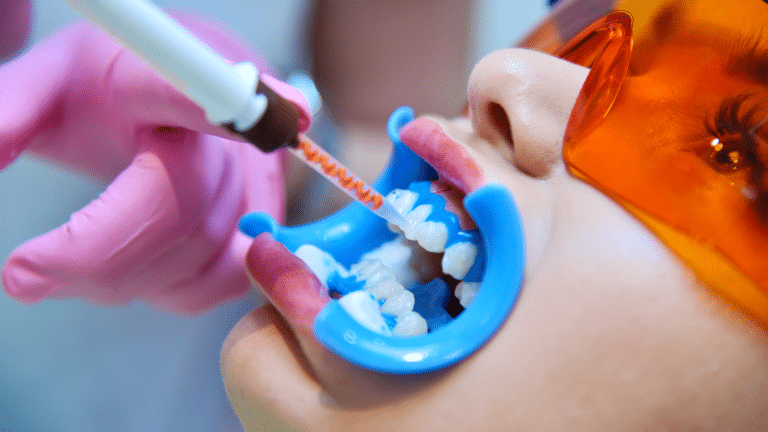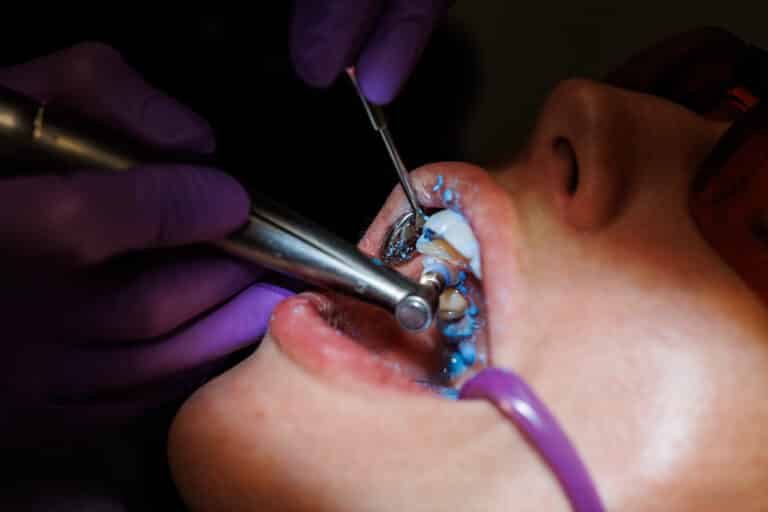At WeSmile Dental, we often see patients who feel puzzled or self-conscious about white spots on their teeth. These chalky marks can appear at any age — from children to adults — and while they may seem harmless at first glance, they often signal subtle changes in your enamel that may need attention.
Whether you’re noticing white spots after braces, concerned about fluorosis, or asking yourself, “Why do I have white spots on my teeth?” — you’re not alone. This page is your comprehensive guide. We’ll explore the common causes, dental treatment options, and practical ways to prevent these spots from forming or worsening, so you can take confident steps towards a healthier, more even-looking smile.
What Are White Spots on Teeth?
White spots on teeth are areas of decalcification or enamel disruption. Unlike the natural whiteness of a healthy smile, these spots can appear chalky, uneven, or slightly translucent. They may show up on the front teeth, along the gum line, or after orthodontic treatment.
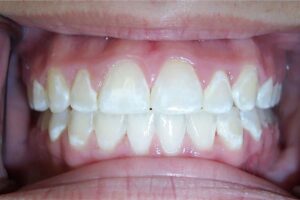
These marks are usually a sign that something has disrupted the mineral balance of your enamel. At WeSmile Dental, we use visual examination, and when necessary, additional diagnostic tools to assess whether the spots are superficial or indicative of deeper enamel changes.
Why Do I Have White Spots on My Teeth?
This is one of the most common questions we hear. There are several possible answers:
- Fluorosis
- Enamel hypoplasia
- Demineralisation due to poor oral hygiene
- Braces-related plaque retention
- Dietary habits
Each cause has different implications, so it’s essential to understand what’s behind your white spots before exploring treatment.
Common Causes of White Spots on Teeth
Let’s explore the key causes behind these marks, starting with one of the most common: dental fluorosis.
Dental Fluorosis Symptoms
Dental fluorosis results from excessive fluoride intake during enamel development, typically in early childhood. While fluoride helps strengthen teeth and prevent cavities, too much can disrupt the mineralisation process, leading to visible changes on the tooth surface.
The severity of fluorosis varies widely and is usually categorised as follows:
| Dental Fluorosis Severity | Appearance of White Spots on Teeth | Dental Fluorosis Description |
|---|---|---|
| Mild | Faint white streaks or small spots | Subtle, often unnoticed without close inspection |
| Moderate | Larger, more noticeable white patches | Opaque, chalky areas that cover more surface area |
| Severe | Brown stains, pitting, and rough enamel surface | Discolouration accompanied by surface defects and enamel wear |
Patients who develop fluorosis often have a history of multiple fluoride sources during childhood — such as fluoridated water, toothpaste, supplements, or professional treatments. While fluorosis is mainly a cosmetic issue, especially at mild to moderate levels, severe cases may affect the tooth’s texture and appearance significantly.
At WeSmile Dental, recognising the degree of fluorosis helps us recommend appropriate cosmetic or restorative treatments that enhance your smile while protecting enamel health.
Dental Enamel Hypoplasia and White Spots on Teeth
Enamel hypoplasia refers to thin or poorly formed enamel, which may result from genetic conditions, high fevers during infancy, or prenatal issues. Affected teeth are more vulnerable to decay, sensitivity, and visible spots.
White Spots on Teeth After Braces
Orthodontic treatment can sometimes leave white marks behind, particularly if plaque builds up around brackets and wires. This decalcification is a form of early decay and should be addressed before it worsens. Book a visit with us to get it sorted as soon as possible. Tooth Enamel White Spots and Demineralisation
Demineralisation occurs when acids from plaque, diet, or dry mouth erode the enamel’s surface minerals. This creates porous patches that reflect light differently, appearing white or chalky.
Left untreated, demineralised areas can progress into cavities or lead to further cosmetic damage.
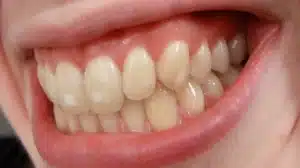
Brown Stains on Teeth
Unlike white spots, brown stains often suggest more advanced issues and can affect the appearance and health of your teeth. These stains may appear as patches, streaks, or blotches and are commonly caused by:
- Advanced fluorosis – Excess fluoride during tooth development can lead to deep discolouration.
- Tartar build-up – Hardened plaque traps stains, especially near the gumline.
- Tobacco use – Smoking or chewing tobacco often causes dark, stubborn marks.
- Drinks like coffee, tea, or red wine – These contain pigments that cling to enamel.
- Enamel wear or early decay – Brown spots can sometimes signal damage beneath the surface. Early decay may occur when plaque and tartar build up over time, especially if you don’t go for regular scaling and polishing. If it’s been a while since your last visit, it might be time to book one now.
At WeSmile Dental, we assess whether your stains are surface-level or indicate deeper problems. From gentle polishing to targeted treatments, we tailor solutions to restore your smile’s brightness — and your confidence.
How to Get Rid of White Spots on Teeth: Treatment Options
If you’re asking how to remove white spots on teeth, good news: several solutions exist, depending on the cause and severity.
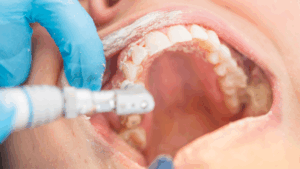
Professional Treatment for White Spots on Teeth
Dentists begin with a consultation to identify the underlying cause. Once that’s clear, we may recommend any of the following:
Resin Infiltration and Microabrasion for White Spot Lesions
- Resin infiltration (e.g. ICON treatment) is a non-invasive approach where a special material penetrates the lesion, blending it with the surrounding enamel.
- Microabrasion uses a mild abrasive and acid to gently remove a thin enamel layer, often effective for superficial white spots.
These methods are particularly useful for post-braces marks and mild fluorosis.
Teeth Whitening for Removal of White Spots on Teeth
Professional whitening can even out mild discolouration and reduce the contrast between white spots and the rest of the tooth. However, if spots are very bright or extensive, whitening may make them more noticeable initially. We often combine whitening with other treatments to get the best results.
Cosmetic Solutions for White Spots on Teeth: Veneers and Bonding
For more noticeable white or brown stains on your teeth, cosmetic dental treatments like veneers and bonding can help restore both confidence and aesthetics.

Teeth Veneers to Hide White Spots on Teeth
Are thin porcelain shells attached to the front surface of the teeth. They’re ideal for severe discolouration caused by fluorosis or enamel hypoplasia, especially when whitening isn’t effective.
Why it helps: Veneers completely mask uneven colouring and texture, offering a uniform, natural-looking smile that’s also resistant to future stains.
Teeth Bonding to Cover White Spots on Teeth
Involves applying a tooth-coloured composite resin to affected areas, then shaping and polishing it for a seamless finish. It’s best suited for smaller, localised white or brown spots — often from post-braces demineralisation or early enamel damage.
Why it helps: Bonding blends the discoloured area with your natural tooth, providing quick and affordable cosmetic improvement without extensive dental work.
Preventing White Spots on Teeth
While treatment is effective, prevention is even better.
Best Practices for Preventing White Spots on Teeth
- Avoid excessive fluoride during early childhood
- Supervise children’s toothbrushing with age-appropriate fluoride toothpaste
- Visit the dentist every six months for check-ups and cleaning
Oral Hygiene Tips to Avoid White Marks on Teeth
White spots or marks on your teeth can often be prevented with a few consistent habits. Here’s how to protect your enamel and maintain a healthy, stain-free smile:
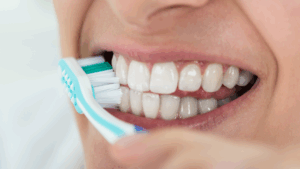
Brush Daily with Fluoride Toothpaste
Use a pea-sized amount of fluoride toothpaste and a soft-bristled brush to clean all tooth surfaces — especially near the gumline and around any orthodontic appliances. Fluoride strengthens enamel and helps prevent early demineralisation, which often appears as white spots.
Floss Daily to Remove Plaque Between Teeth
Plaque build-up between teeth is easy to miss with brushing alone. Daily flossing helps remove food particles and bacteria that could lead to enamel demineralisation and discolouration, especially in hard-to-reach areas.
Rinse with Water After Acidic Drinks
Acidic beverages like soda, energy drinks, or citrus juices can weaken enamel and make it more prone to white spots and staining. Rinsing with plain water immediately after drinking helps neutralise acid levels and wash away sugars that feed bacteria.
Use a Straw for Staining Beverages
Drinking through a straw minimises direct contact between your teeth and beverages like coffee, tea, or red wine — all of which are known to stain enamel and contribute to discolouration over time.
If You Wear Braces, Be Extra Diligent
Brackets and wires create small spaces where plaque can easily collect. To keep your enamel healthy during orthodontic treatment:
- Use interdental brushes or water flossers to clean around brackets
- Consider using a fluoride mouth rinse to strengthen enamel
- Avoid sticky or sugary snacks that increase your risk of demineralisation
When to See a Dentist for White Spots on Teeth
It’s time to book a dental consultation if:
- You notice new white or brown spots on your teeth
- You’re unhappy with the appearance of your smile
- You’ve had braces and are now seeing changes in enamel
- You suspect fluorosis or enamel damage in your child
At WeSmile Dental, we don’t just treat teeth — we help restore confidence and ensure long-term oral wellness. During your visit, we’ll discuss your dental history, examine your enamel under proper lighting, and recommend a personalised plan.
Final Thoughts: A Clearer Smile Begins Here
White spots on teeth may seem minor, but they can say a lot about your oral health. Whether caused by fluorosis, braces, or daily habits, they’re manageable with the right care and insight.
At WeSmile Dental, we’re committed to delivering practical, ethical, and aesthetic solutions that align with Singapore’s guidelines and your personal goals. If you’re ready to explore what’s possible for your smile, book your visit today. Let’s restore confidence, one tooth at a time.

